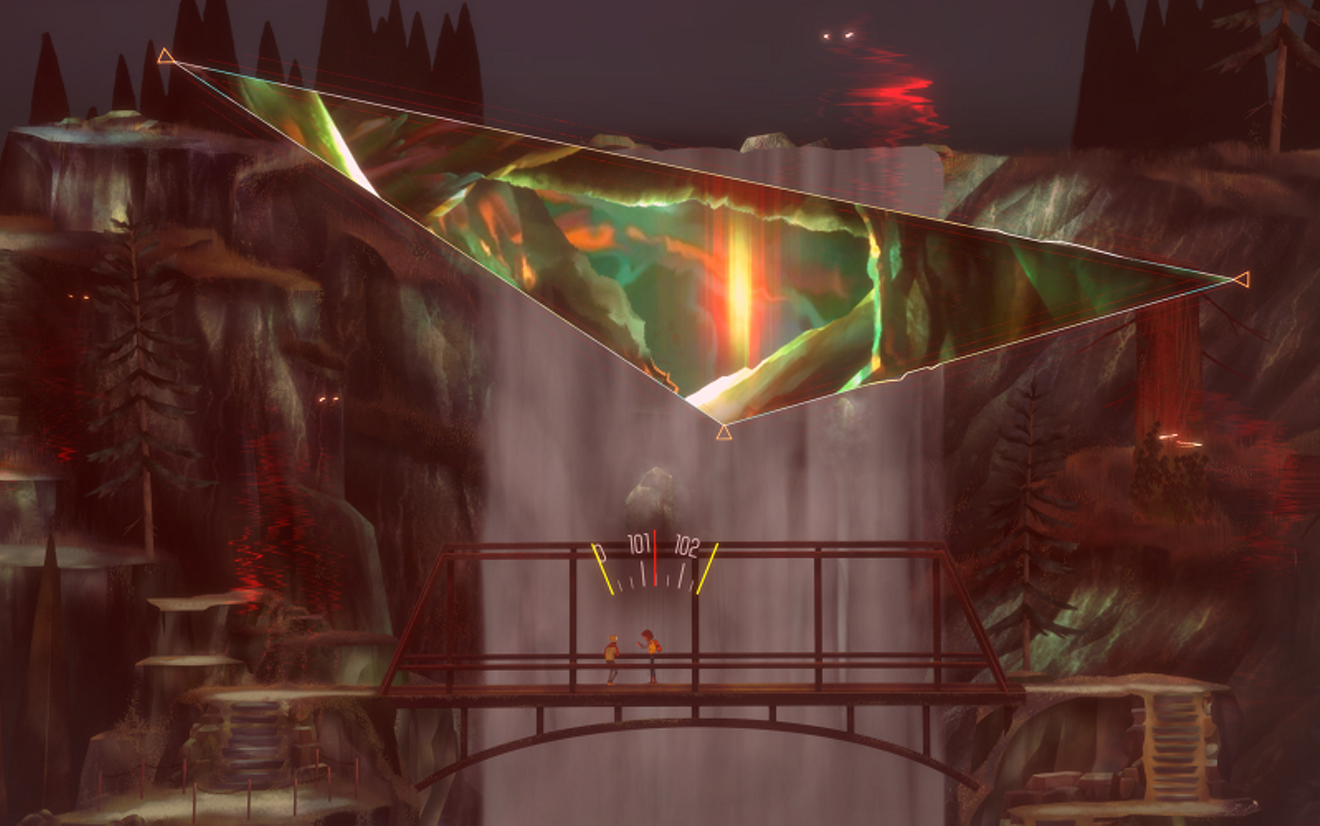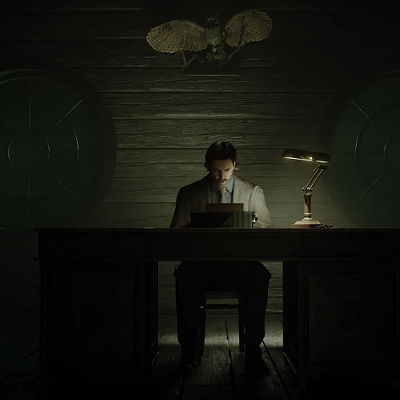Support Us
Houston's independent source of
local news and culture
account
- Welcome,
Insider - Login
- My Account
- My Newsletters
- Contribute
- Contact Us
- Sign out

Haunted triangles are back and they're better than ever.
Screencap from Oxenfree II: Lost Signals
[
{
"name": "Related Stories / Support Us Combo",
"component": "11591218",
"insertPoint": "4",
"requiredCountToDisplay": "4"
},{
"name": "Air - Billboard - Inline Content",
"component": "11591214",
"insertPoint": "2/3",
"requiredCountToDisplay": "7"
},{
"name": "R1 - Beta - Mobile Only",
"component": "12287027",
"insertPoint": "8",
"requiredCountToDisplay": "8"
},{
"name": "Air - MediumRectangle - Inline Content - Mobile Display Size 2",
"component": "11591215",
"insertPoint": "12",
"requiredCountToDisplay": "12"
},{
"name": "Air - MediumRectangle - Inline Content - Mobile Display Size 2",
"component": "11591215",
"insertPoint": "4th",
"startingPoint": "16",
"requiredCountToDisplay": "12"
}
]
The best way to describe Oxenfree II: Lost Signals is “more.” There is simply more of everything. In almost every way, it is better than its predecessor.
The sequel picks up some time after the events of the first game. Our hero is Riley, an aimless young woman who returns to her small town on the Oregon coast for work after leaving the army. She’s employed by a local research company to study strange radio waves. This puts her in conflict with the ghosts of an experimental World War II submarine that use radio to try and possess new bodies.
Oxenfree in 2016 was somewhat revolutionary as both a horror game and an adventure title. By allowing characters to freely move and interact with the environment while navigating the dialogue tree at the same time, the game gave a more realistic sense of existence. There were no awkward moments where characters just sat and stared at you while you made up your mind. It’s a mechanic that still hasn’t really gone mainstream even though it should.
Its advancements in horror are more subtle. As a Lo-Fi experience, it has to get its scares outside of high-quality gore. Instead, the ghosts that plague the game use an unnerving set of mismatched speech patterns and environmental changes to make the player uneasy. It’s a very effective horror game, but also one you could share with your kids.
Lost Signals continues all of that, but even more so. The game is undeniably prettier. There are a lot of subtle elements that top the original, such as flyers on a bulletin board moving in the breeze and visible footsteps. The whole thing is far more polished visually without losing its distinct, cartoonish style. Imagine the best possible episode of Scooby Doo, and you have what Lost Signals has accomplished.
The writing is also better. While the dialogue still occasionally sounds like it was lifted from an episode of Daria, it’s less forced and more earnest. All the characters are more realistic, likeable, and sincere. The primary purpose of an Oxenfree game is narrative, and Lost Signals has the better story. Riley may not be quite as fun as Alex from the first game, but she is infinitely more relatable.
There is also more to do. The game introduces a walkie talkie mechanic that allows you to explore various side quests and meet a lot more characters. These aren’t particularly hard, but they do let you spend more time on the island getting to know the history of everything. It borrows heavily from Firewatch, right down to having a park ranger to talk to over the walkie, and is the most “new” thing about the game.
It’s also where the game has its only real flaw. There are moments when you’re balancing a walkie conversation, environmental exploration, and an in-person conversation, and the whole game grinds to a halt while you wait each part out. The game tries to give a player enough time to talk and engage in the long walks between objectives, but the pacing is a little off. Even a mildly driven player will run into places where you just want a character to shut up so you can open a door. Sometimes, there is just too much stuff happening, and it ruins the languid pace of the game.
That aside, the scares are even more intense in Lost Signals, and they’re a hell of a lot more subtle. There’s this moment when Riley is descending a church tower that is clearly not that large when seen from outside, but as you go down the rope, it becomes an abyssal hole into the Earth. It’s a trick as old as Silent Hill 2, but it still made my skin crawl.
Also, whoever wrote all the creepy rhymes The Sunken say over the radio needs a raise. That stuff was very unsettling.
If there’s any other complaint, it’s that the finale is a little weak. Not only does the game negate the best ending from Oxenfree, it gives the player one of those sets of choices where there is clearly an answer the game wants you to pick and an answer no one is going to pick. It’s needlessly gimmicky for what is otherwise a game that refuses to act like most other games.
On the other hand, whatever you pick, the actual ending is framed as a collection of artifacts that you can pick through and examine. This is frankly brilliant and made finishing the game feel like an accomplishment. It was nice to get a physical trophy from the park ranger I helped and added far more weight to the game’s choices than the contrived “who will be sacrificed” mechanic.
While Lost Signals doesn’t do much to advance Oxenfree as a franchise, it’s definitely an improvement over the first game in a Portal 2 versus Portal kind of way. As a horror experience, it’s still unique, accessible, and fun. At the very least, it will make you intensely afraid of triangles.
Oxenfree II: Lost Signals is now available on Switch, PlayStation 4/5, Steam, and on Netflix
KEEP THE HOUSTON PRESS FREE...
Since we started the Houston Press, it has been defined as the free, independent voice of Houston, and we'd like to keep it that way. With local media under siege, it's more important than ever for us to rally support behind funding our local journalism. You can help by participating in our "I Support" program, allowing us to keep offering readers access to our incisive coverage of local news, food and culture with no paywalls.
Jef Rouner (not cis, he/him) is a contributing writer who covers politics, pop culture, social justice, video games, and online behavior. He is often a professional annoyance to the ignorant and hurtful.
Contact:
Jef Rouner
Trending Arts & Culture
- New Tome Details North America's Uncivil Times
- Thornton Wilder's The Emporium Takes the Stage at Alley Theatre
- The 10 Best And Most Controversial Hustler Magazine Covers Ever (NSFW)
-
Sponsored Content From: [%sponsoredBy%]
[%title%]

Don't Miss Out
SIGN UP for the latest
arts & culture
news, free stuff and more!
Become a member to support the independent voice of Houston
and help keep the future of the Houston Press FREE
Use of this website constitutes acceptance of our
terms of use,
our cookies policy, and our
privacy policy
The Houston Press may earn a portion of sales from products & services purchased through links on our site from our
affiliate partners.
©2024
Houston Press, LP. All rights reserved.





